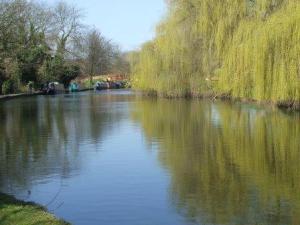Berkhamsted in Hertfordshire
Part I: Historical background & References
This is the first of three parts dealing with Berkhamsted in Hertfordshire. The posts are based on a talk I gave at the recent Ricardian convention at Albury, where members of the Richard III Society from Australia and New Zealand met.
(This post was updated 21 Dec. 2018)

Grand Union Canal in Berkhamsted
A few years ago, while visiting the UK, I decided to go to Berkhamsted in Hertfordshire, where the mother of Richard III, Cecily Neville, duchess of York, had resided for a long period.
(Great) Berkhamsted is a town in western Hertfordshire. Not to be confused with Little Berkhamsted, a village, also in Hertfordshire, approx. 6 km east of Hatfield. When we lived in central Hertfordshire for five years in the 1990s, Little Berkhamsted was much closer to home and easily visited. However, a trip to the other Berkhamsted so far west had been in the too hard basket at that time!
It took the distance from Australia to put things into perspective. So, when, many years later, I was going to drive from St Albans to Oxford, it was the perfect opportunity to make up for my earlier negligence. In anticipation of my trip, I told some friends that I would be going to meet up with Cecily Neville for a coffee.

Cecily Neville
Continue reading →









